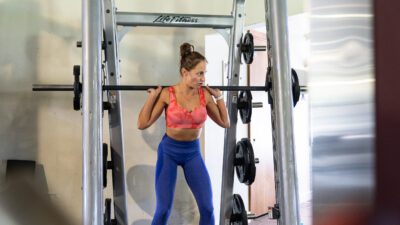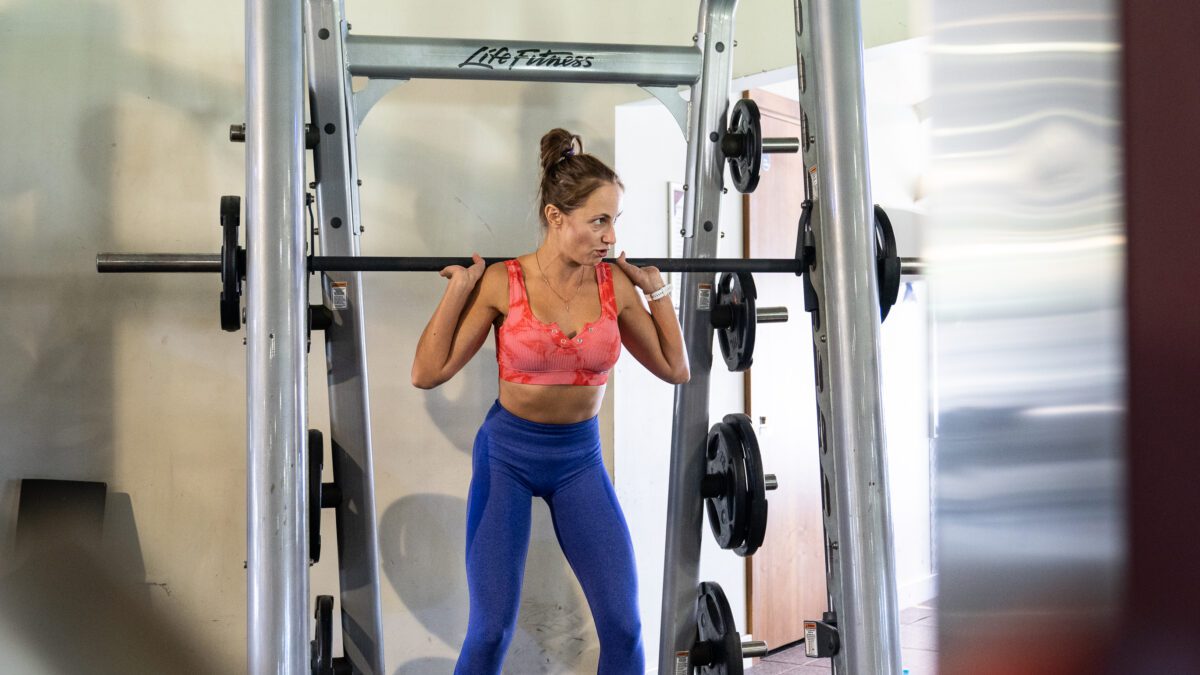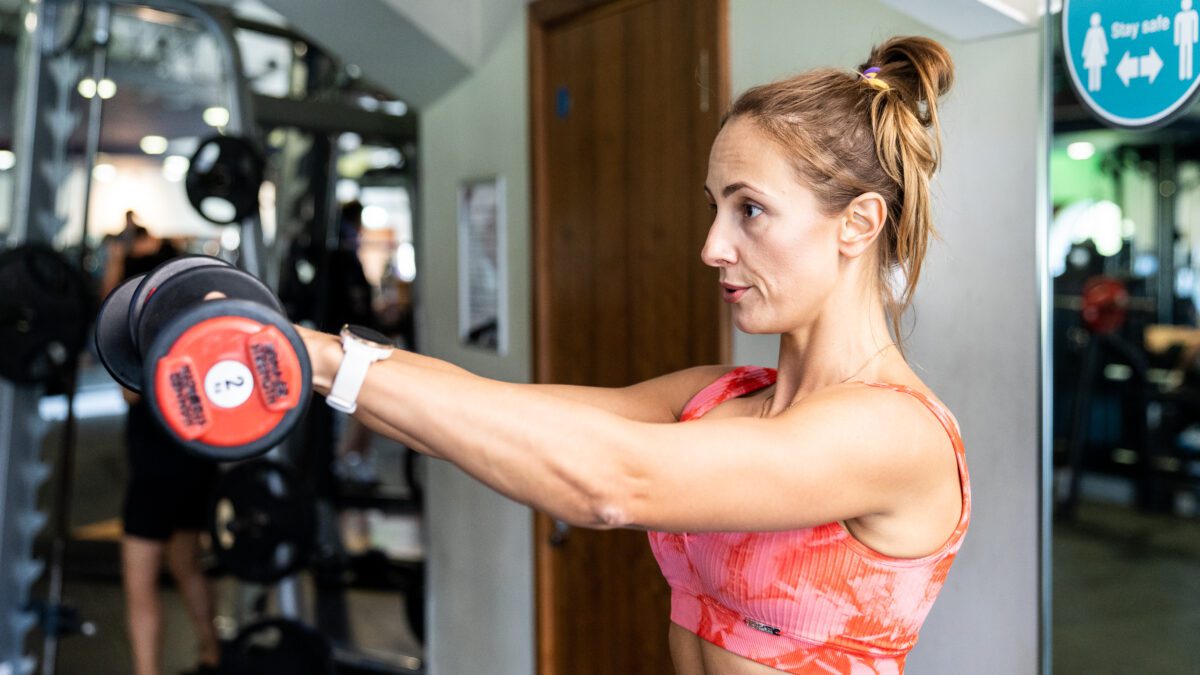



Everybody is different. Some may have longer or shorter limbs, and this can affect the way we need to perform certain exercises for strength training with heavy weights to ensure they are conducted safely and effectively by all.
In this post, written by guest author Human Kinetics, we look at an extract from the book Strength Training for All Body Types, to understand how the squat can be modified to better suit different body types and how to modify types of training for all to fit each exercise plan.
Want to receive 20% off of Human Kinetics books? Become a Future Fit student today.
Squat for tall; short torso, and long legs; long femur
The main issue that lifters in these three body categories have is being able to achieve a full range of motion and a deeper depth. Lifters in the tall category may not have any glaring disproportion that’s clearly visible, but the sheer distance they need to travel can demand a lot of their mobility and energy, which can make the back squat pattern a challenge.
Poor mobility in a squat usually results in at least one of the following compensations:
Lifters in these demographics who are plagued by one or more of these issues typically need a less severe torso angle and improved mobility at the ankle and hip joints to ameliorate the situation. Looking for the congruency between torso and shin angle as mentioned earlier is a good place to start and may require variations that better fit the lifter and their body.

This article was adapted from Strength Training for All Body Types. Use your exclusive Future Fit discount to receive 20% off the book. Want to receive this discount?
Variation: Barbell Front Squat
It’s truly amazing just how many issues can be addressed by simply switching from a back squat to a front squat. The first thing it does is force the lifter to consider the physics. Since the squat is a vertical push pattern (a lifter pushes the bar away from the floor to complete the squat), the ideal bar position is over the middle of the foot. In motion, the bar should travel in as straight a line as possible to maximise movement efficiency and minimise disturbances to its path. Knowing this, consider the starting position of a back squat when starting a strength training workout. Most would be quick to conclude that standing with the bar positioned on the back equals an upright, completely vertical starting position, with the hips open to a 180-degree angle—and they would be wrong.
For the bar to be balanced on the back at the start of a back squat, the hips need to start flexed with the torso angled slightly forward by a few inches. This not only keeps the bar from rolling off the back but also places the bar in the right place in space. This creates a greater propensity to push the hips back to initiate the squat, which can counter the necessary mechanics for people of the body type demographics being spoken of. For them, the reliance on knee bend may be greater than for shorter-legged lifters, because the rate of angular change required at the knee joint in order for its flexion to keep up with hip flexion will be faster compared with a lifter with shorter legs. If this didn’t happen, the excessive hip flexion would result in a severely angled torso.
Placing the loaded barbell on the front of the body instead of the back of the body allows a lifter to truly open up the hips for a true tall starting position. Remember: The bar’s placement over the midfoot means the upper body will be able to remain behind the bar at the top, rather than in front of it. Since the weight is acting as more of a counterbalance in this setup, it allows the lifter to better sit against the weight and to initiate the squat from more of a simultaneous knee and hip flexion (knee flexion may even start an instant before hip flexion). All of this will promote a deeper depth when all things are equal. The front squat creates certain lifting terms: If you pitch forward too far, the bar is coming down. That creates a greater demand for the torso to remain vertical, forcing the lumbar spine to endure less shear.
To perform a successful full-range front squat, a lifter will be best off when having a good degree of dorsiflexion, wrist and shoulder mobility, and thoracic spine extension. For all of these reasons, a front squat proves itself to be a generally more athletically demanding variation of the two barbell squats—and one that emphasises the proper function of most load-bearing joints.
Squat for long shins; short
Having longer shins when squatting will mean less reliance on dorsiflexion and a likely limit to just how much range of motion can be attained when squatting deep. Similarly, a lifter with a short overall height may be looking for more time under tension when squatting in order to get the most out of the muscles despite a small overall range of motion. Squatting to a box or to partial ranges will still provide benefits for lifters, but it may not optimise and make best use of the particulars of the anthropometrics of lifters in these categories.
Especially for these body types, it’s even more important to determine just what squat stance will promote the best overall range of motion. Trial and error when squatting will help you do this. Once that’s been established, adding time spent dealing with the load should be a priority.
Variation: slow, eccentric paused back squat
There’s not much esoteric science to explain this exercise and its benefits to a lifter: Adding seconds to the eccentric component of a squat increases the amount of time spent bearing the load. Including a two- or three- second pause eliminates any transfers of forces and momentum to be used during the lift. This makes the lift more honest but also forces a lifter to dial in on focus and maintain tension through the entire body.
Of note, it’s very easy to relax at the bottom of a paused squat and let the body sit in the fully flexed position without any concerted contraction. It’s worth remembering that muscles connect to joints via tendons. If the muscles aren’t as active as possible—especially through end ranges—it can lead to joint laxity and the susceptibility to injury. Since joints often get injured while they’re changing positions, it’s up to the muscles of the body to bolster them through a controlled pattern like an exercise in the weight room. Deliberately activating more muscles that surround a joint (in order to better support that joint) is the textbook definition of the law of irradiation, which states that recruitment of neighbouring muscles to a working muscle can amplify the strength and stability of the movement in question.
This article was adapted from Strength Training for All Body Types. Use your exclusive Future Fit discount to receive 20% off the book. Want to receive this discount? Discover our training courses today.